Content Menu
● Understanding the Basics of Period Swimwear
● The Multi-Layer Approach
>> 1. Outer Layer: Water-Repellent Fabric
>> 2. Middle Layer: Absorbent Core
>> 3. Inner Layer: Moisture-Wicking Lining
● The Science of Water Repellency
● Hydrophobic Materials
● Surface Treatments
● Innovative Fabric Weaves
● Balancing Water Repellency and Breathability
● The Role of Fit in Water Resistance
● Sustainability and Eco-Friendly Innovations
● Performance in Different Water Environments
● Care and Maintenance for Longevity
● The Future of Period Swimwear Technology
● Conclusion
For many years, women have faced challenges when it comes to swimming or enjoying water activities during their menstrual cycles. The fear of leaks, discomfort, and the inconvenience of traditional period products have often kept them away from the pool or beach. However, with the advent of period swimwear, a revolutionary solution has emerged, allowing women to confidently participate in water-based activities regardless of their menstrual cycle. But how does period swimwear manage to keep you dry and protected without absorbing water? In this comprehensive article, we'll dive deep into the innovative technology, materials, and design principles that make period swimwear a game-changer for menstruating individuals.
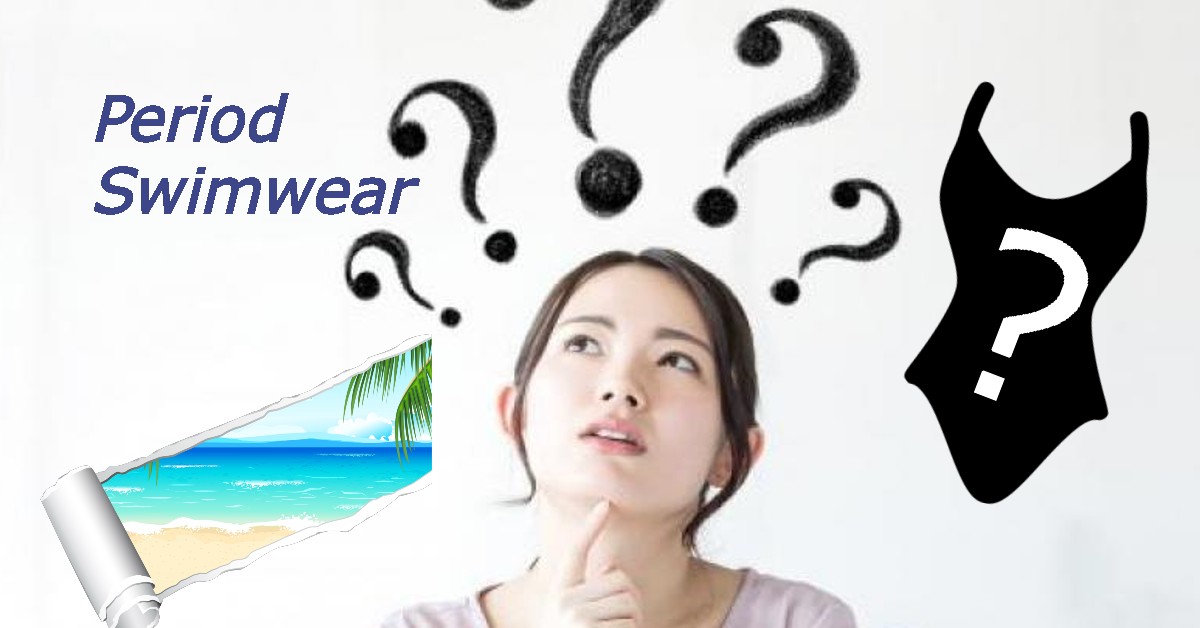
Understanding the Basics of Period Swimwear
Before we delve into the intricacies of how period swimwear resists water absorption, it's essential to understand what period swimwear is and how it differs from regular swimwear. Period swimwear, also known as menstrual swimwear or leak-proof swimwear, is specially designed to be worn during menstruation. It looks and feels like regular swimwear but incorporates advanced technology to provide protection against leaks while allowing the wearer to swim and engage in water activities comfortably.
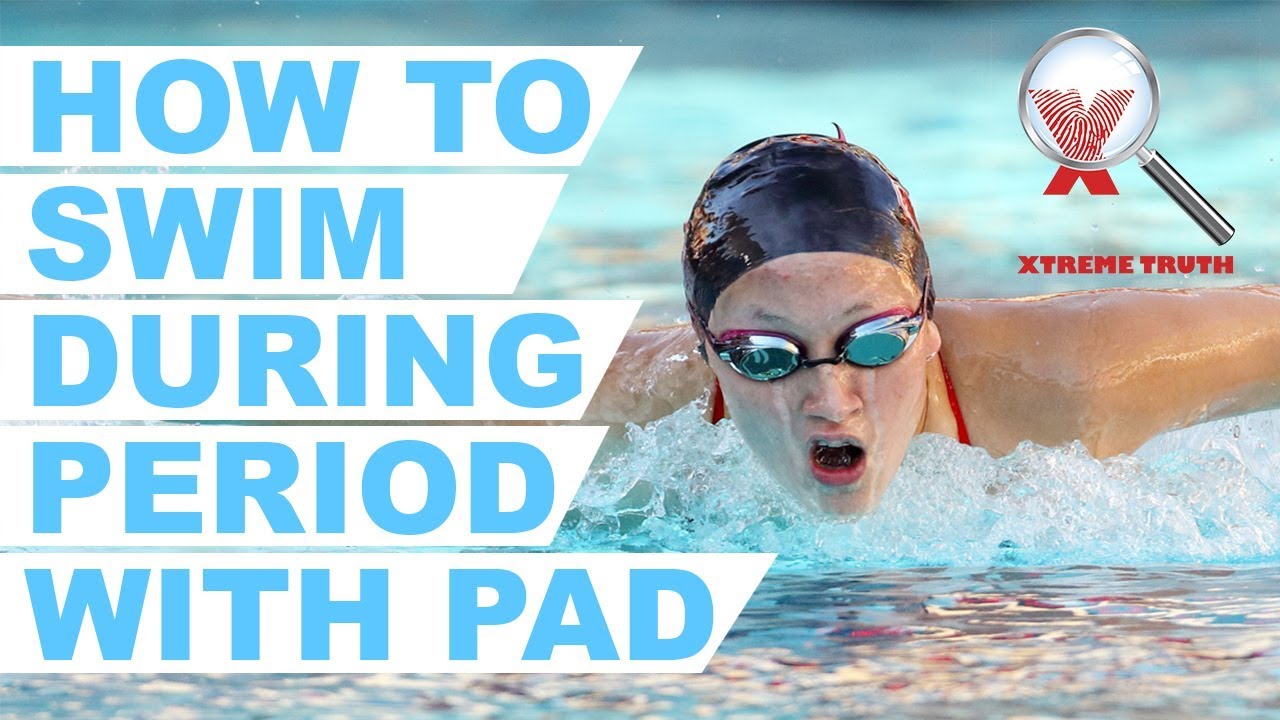
The Multi-Layer Approach
At the heart of period swimwear's functionality is its multi-layer construction. Unlike traditional swimwear, which typically consists of a single layer of fabric, period swimwear incorporates several layers, each serving a specific purpose. Let's break down these layers to understand their roles in keeping you dry and protected:
1. Outer Layer: Water-Repellent Fabric
The outermost layer of period swimwear is crafted from water-repellent fabric. This layer is crucial in preventing water from entering the swimwear while you're in the pool or ocean. The water-repellent properties are achieved through advanced fabric treatments or by using materials with inherent hydrophobic qualities. When water comes into contact with this layer, it beads up and rolls off instead of being absorbed into the fabric.
This water-repellent outer layer serves two primary purposes:
a) It keeps the internal absorbent layers dry, ensuring they remain effective in managing menstrual flow.
b) It prevents the mixing of water with menstrual blood, reducing the risk of leaks and maintaining hygiene.
2. Middle Layer: Absorbent Core
Beneath the water-repellent outer layer lies the absorbent core, which is the powerhouse of period swimwear. This layer is designed to quickly absorb and retain menstrual flow, preventing it from leaking out. The absorbent core is typically made from highly innovative materials that can hold a significant amount of liquid without feeling bulky or uncomfortable.
Some of the materials commonly used in the absorbent core include:
◆ Microfiber fabrics: These synthetic fibers are extremely fine and can absorb many times their weight in liquid while remaining thin and lightweight.
◆ Bamboo charcoal: Known for its excellent absorbency and odor-control properties, bamboo charcoal is often incorporated into the absorbent layer.
◆ Super-absorbent polymers: These materials can absorb and retain large amounts of liquid relative to their own mass.
The absorbent core is engineered to quickly wick away moisture from the body, keeping the wearer feeling dry and comfortable. It's important to note that while this layer is highly absorbent, it's designed to retain menstrual flow rather than absorb water from the pool or ocean.
3. Inner Layer: Moisture-Wicking Lining
The innermost layer of period swimwear, which sits against the skin, is typically made from moisture-wicking material. This layer serves several important functions:
a) It quickly moves moisture away from the skin, keeping the wearer feeling dry and comfortable.
b) It provides a soft, comfortable surface against the skin to prevent irritation.
c) It acts as an additional barrier to prevent leaks.
The moisture-wicking properties of this layer ensure that any menstrual flow is quickly transferred to the absorbent core, maintaining a dry feeling against the skin.
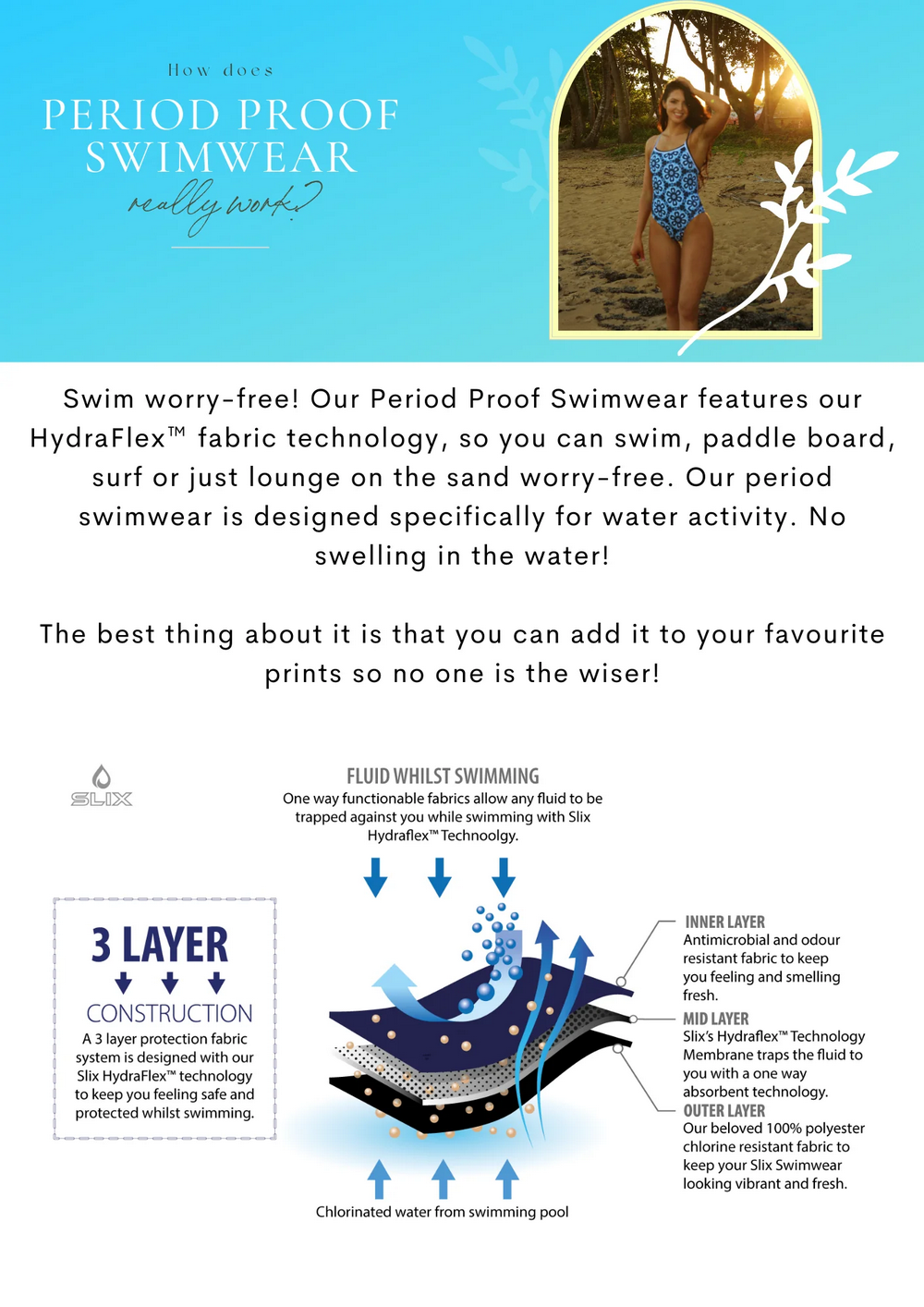
The Science of Water Repellency
Now that we understand the layered construction of period swimwear, let's explore the science behind its water-repellent properties in more detail.
Hydrophobic Materials
The outer layer of period swimwear often incorporates hydrophobic materials. These materials have a molecular structure that repels water molecules. When water comes into contact with a hydrophobic surface, it forms droplets instead of spreading out and being absorbed. This is due to the high surface tension of water and the low surface energy of the hydrophobic material.
Some common hydrophobic materials used in period swimwear include:
◆ Polyester: A synthetic fabric that naturally repels water.
◆ Nylon: Another synthetic material with water-repellent properties.
◆ Specially treated natural fibers: Some manufacturers use eco-friendly treatments to make natural fibers like cotton water-repellent.
Surface Treatments
In addition to using hydrophobic materials, many period swimwear manufacturers apply special surface treatments to enhance water repellency. These treatments can include:
◆ Fluoropolymer coatings: These create an ultra-thin, water-repellent layer on the fabric surface.
◆ Silicone-based treatments: These provide excellent water repellency and are often more environmentally friendly than fluoropolymer alternatives.
◆ Nano-coatings: These microscopic treatments create a rough surface at the nanoscale, which increases water repellency.
These treatments work by increasing the contact angle between water droplets and the fabric surface. A higher contact angle means that water droplets are more likely to bead up and roll off rather than being absorbed into the fabric.
Innovative Fabric Weaves
The way the fabric is woven can also contribute to its water-repellent properties. Some period swimwear uses specially designed weaves that create tiny air pockets on the surface of the fabric. These air pockets make it more difficult for water to penetrate the material, enhancing its water-repellent qualities.
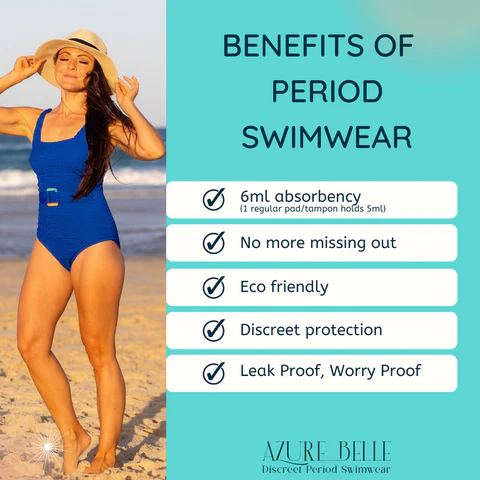
Balancing Water Repellency and Breathability
One of the challenges in designing period swimwear is balancing water repellency with breathability. While it's crucial to keep water out, the swimwear must also allow air to circulate to prevent overheating and discomfort. Manufacturers achieve this balance through:
◆ Strategic placement of water-repellent treatments
◆ Using breathable, moisture-wicking fabrics for the inner layers
◆ Incorporating small, strategically placed ventilation areas
This careful balance ensures that the swimwear remains comfortable and functional both in and out of the water.
The Role of Fit in Water Resistance
The effectiveness of period swimwear in resisting water absorption isn't solely dependent on the materials and technology used. The fit of the swimwear plays a crucial role in its performance. A proper fit ensures that:
◆ There are no loose areas where water can enter
◆ The absorbent layers are held close to the body for maximum effectiveness
◆ The water-repellent outer layer maintains its integrity
Most period swimwear brands offer a range of sizes and styles to ensure a snug, comfortable fit for various body types. Some even incorporate adjustable features like drawstrings or elastic bands to allow for a customized fit.
Sustainability and Eco-Friendly Innovations
As awareness of environmental issues grows, many period swimwear manufacturers are focusing on sustainability in their products. This focus on eco-friendliness extends to the water-repellent technologies used. Some innovative approaches include:
◆ Using recycled materials: Many brands now use recycled nylon or polyester in their swimwear, reducing the environmental impact of production.
◆ Biodegradable treatments: Some companies are developing biodegradable water-repellent treatments as alternatives to traditional chemical coatings.
◆ Durability: By creating long-lasting swimwear that maintains its water-repellent properties over time, manufacturers reduce the need for frequent replacements.
These sustainable innovations not only benefit the environment but often result in high-quality, durable products that maintain their water-repellent properties for longer.

Performance in Different Water Environments
Period swimwear is designed to perform effectively in various water environments, each presenting unique challenges:
Chlorinated Pools Chlorine can be harsh on fabrics and may affect the water-repellent properties of swimwear over time. High-quality period swimwear is designed to withstand chlorine exposure, maintaining its effectiveness even with regular use in pools.
Saltwater Saltwater can leave residue on fabrics, potentially impacting their water-repellent qualities. Period swimwear manufacturers often test their products in saltwater environments to ensure they remain effective for beach use.
Freshwater Lakes and Rivers While generally less harsh than chlorinated or saltwater, freshwater environments can still pose challenges. Period swimwear is designed to perform well in these settings, resisting water absorption while allowing for comfortable movement.
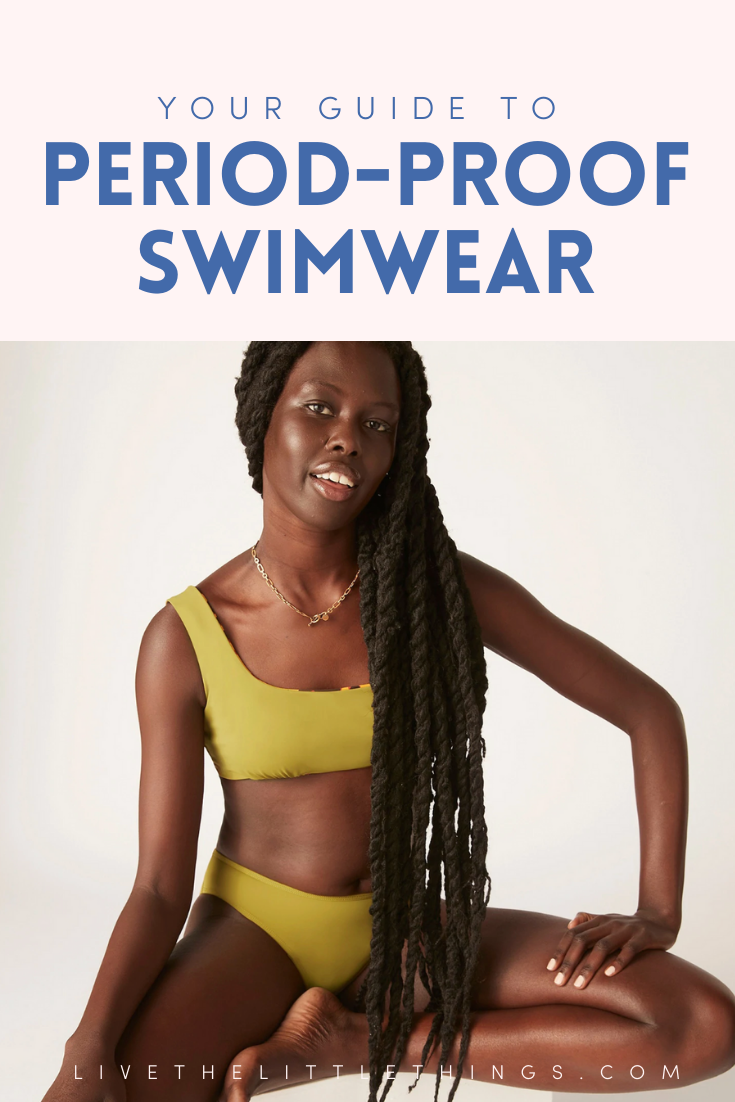
Care and Maintenance for Longevity
To ensure that period swimwear maintains its water-repellent properties over time, proper care and maintenance are essential. Most manufacturers provide specific care instructions, which typically include:
◆ Rinsing the swimwear in cold water after use to remove chlorine, salt, or other residues
◆ Avoiding harsh detergents that can strip the water-repellent coating
◆ Air-drying the swimwear instead of using a dryer
◆ Avoiding fabric softeners, which can interfere with the water-repellent properties
By following these care instructions, users can extend the life of their period swimwear and ensure it continues to perform as intended.
The Future of Period Swimwear Technology
As technology continues to advance, we can expect to see further innovations in period swimwear. Some potential developments on the horizon include:
◆ Smart fabrics that can adjust their properties based on the environment
◆ Even more sustainable and biodegradable materials
◆ Integration with wearable technology for tracking menstrual cycles and flow
◆ Customizable absorbency levels to cater to individual needs
These advancements will likely make period swimwear even more effective, comfortable, and accessible to a wider range of users.
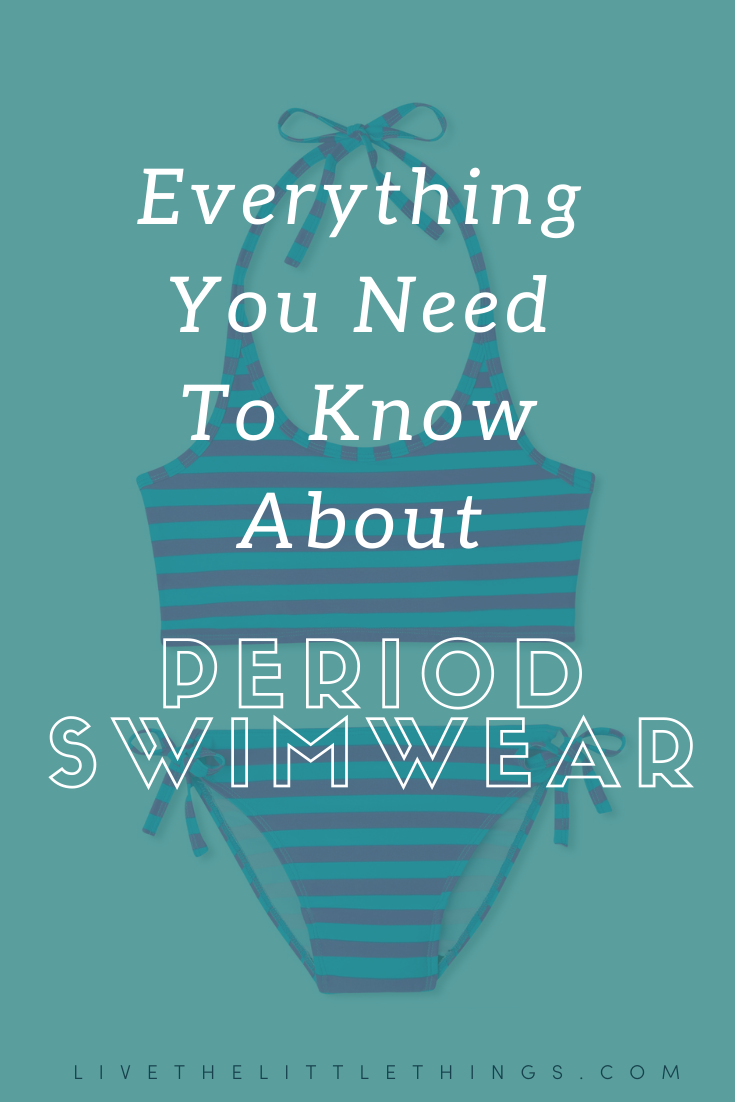
Conclusion
Period swimwear represents a significant leap forward in menstrual care technology. By combining innovative materials, clever design, and advanced manufacturing techniques, these products offer a solution that allows individuals to enjoy water activities without worry during their menstrual cycle. The multi-layered construction, featuring a water-repellent outer layer, highly absorbent core, and moisture-wicking inner lining, works in harmony to provide protection and comfort.
The science behind water repellency in period swimwear is a testament to human ingenuity, leveraging principles of hydrophobic materials, surface treatments, and fabric design to create a product that resists water absorption while managing menstrual flow. As we look to the future, continued innovations in this field promise to make period swimwear even more effective, sustainable, and accessible.
For those who have hesitated to engage in water activities during menstruation, period swimwear offers a liberating solution. It's not just about staying dry; it's about empowering individuals to participate fully in life's activities, regardless of their menstrual cycle. As awareness grows and technology advances, period swimwear is set to become an increasingly common and valued option for menstruating individuals worldwide.
In embracing these innovations, we move closer to a world where menstruation is no longer a barrier to enjoying the simple pleasures of swimming, surfing, or simply relaxing by the water. Period swimwear stands as a shining example of how technology can be harnessed to address real-world challenges, improving quality of life and promoting inclusivity in all aspects of daily living.






































































